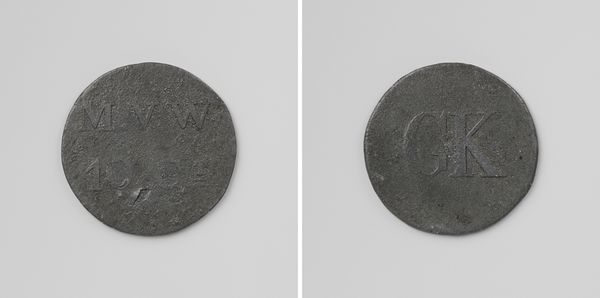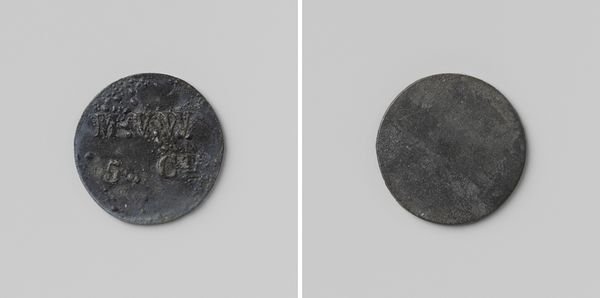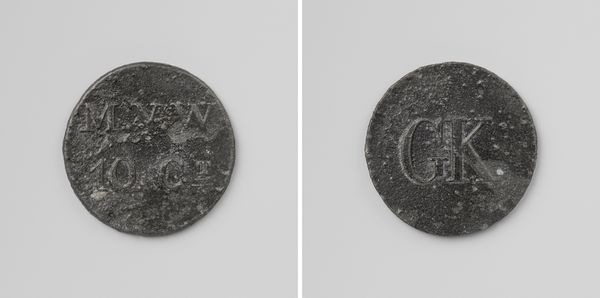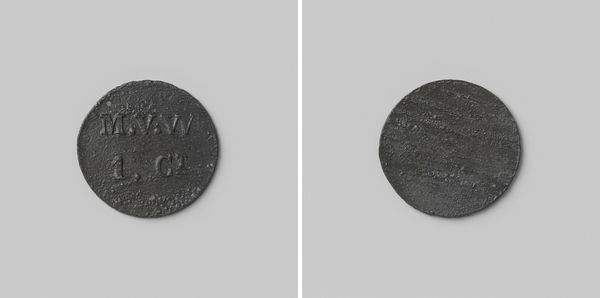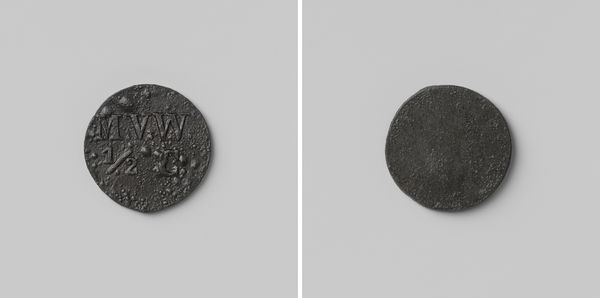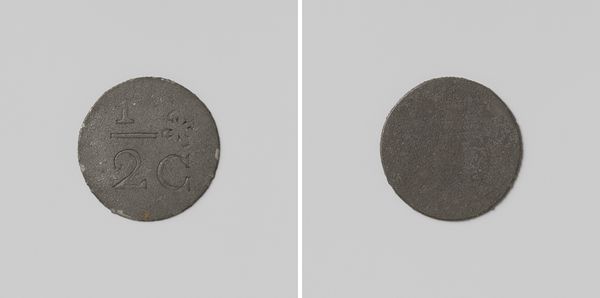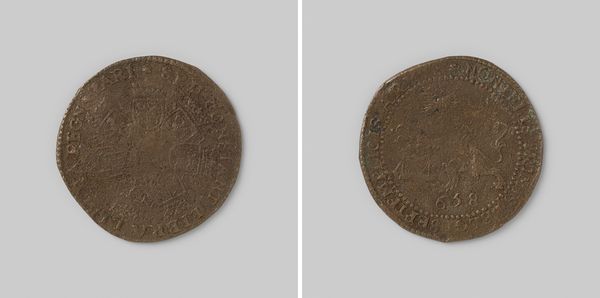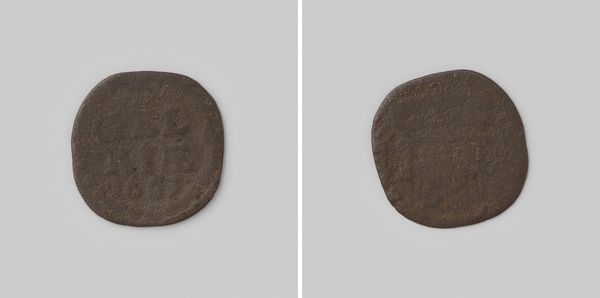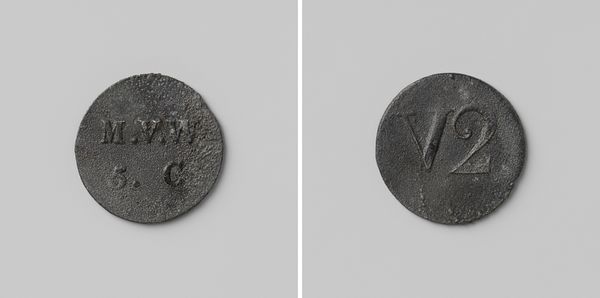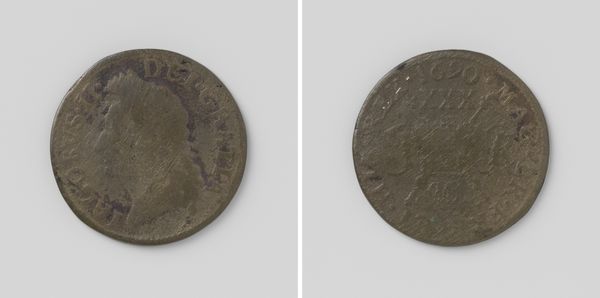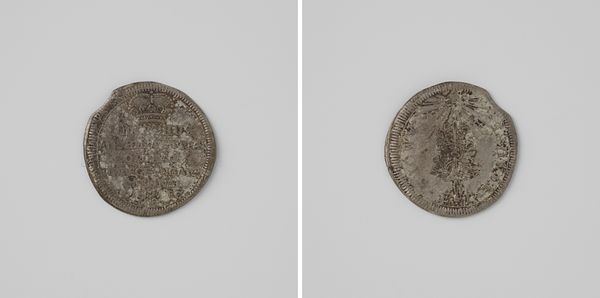
Huismunt geslagen op last van de Maatschappij van Weldadigheid ter waarde van tien cent, ten behoeve van de Gewone Koloniën 1818 - 1859
0:00
0:00
anonymous
Rijksmuseum
print, metal, relief
#
dutch-golden-age
# print
#
metal
#
relief
Dimensions: diameter 2.6 cm, weight 3.95 gr
Copyright: Rijks Museum: Open Domain
Curator: Welcome. Today we will examine a house coin struck by the Society of Welfare valued at ten cents for the Ordinary Colonies. Its production ranges from 1818 to 1859. Editor: The somber, almost crude texture is striking. It reads as both fragile and deeply worn, hinting at difficult circulation. Curator: Precisely. Note the incised letters "M.V.W." and "10 Ct," which provide crucial textual cues to the coin's functionality and origin within a welfare system. Its visual plainness reinforces this purpose. Editor: I’m immediately drawn to how the very materiality speaks to the social conditions of its time. This was obviously not made with high precision—we see irregular edges and an almost pitted surface. Was it intentionally crude, perhaps made within the colonies themselves? Curator: While documentation remains scarce, it is probable that the coining occurred under rudimentary conditions. The choice of base metal as the medium carries its own implicit message, sharply diverging from currency produced for broader economic spheres. The relief is uncomplicated; however, notice the spatial relationships of each carved letter, lending legibility, not luxury, to the form. Editor: Considering it was used within the context of these colonies, could it serve as a tangible representation of the welfare system itself? The texture and crude appearance mirror the hard conditions faced by those it was designed to serve, becoming almost a symbolic embodiment of labor. Curator: One could argue that the stark minimalism acts almost as an emblem for the regimented environments of these colonies, highlighting the austerity inherent in such societal structures. Editor: In that sense, it serves as more than just a means of exchange, but rather as a cultural artifact representative of its historical context, bearing witness to the processes of societal support and the labor associated with it. It gives me much to contemplate regarding economy of material meeting an economy for survival. Curator: It is a somber memento. The reduction of ornament emphasizes utility while offering an insight into 19th-century social economies and control mechanisms.
Comments
No comments
Be the first to comment and join the conversation on the ultimate creative platform.
